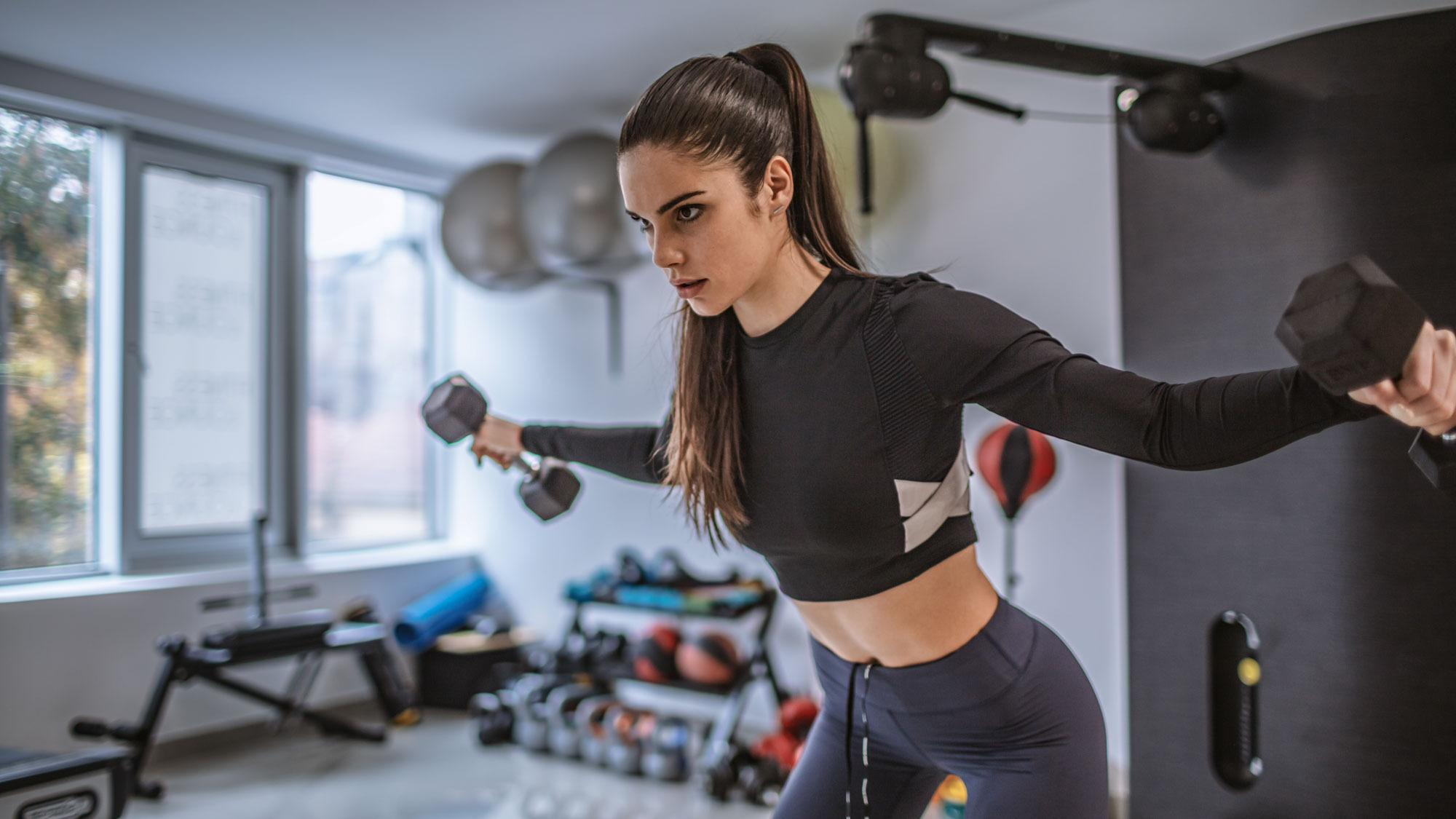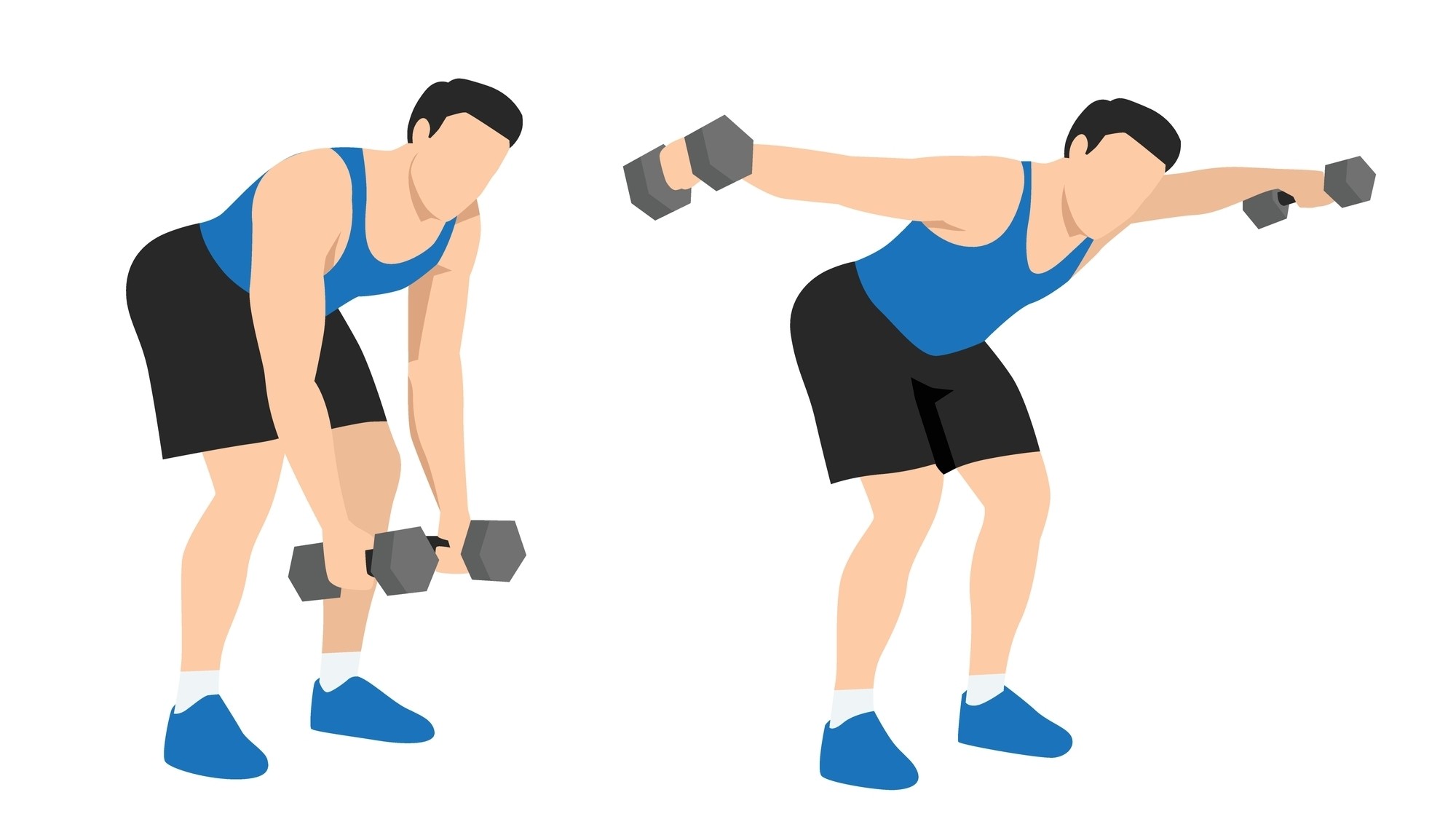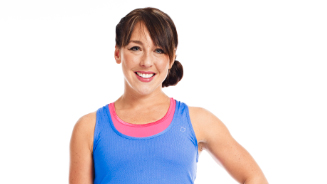I did 100 reverse flyes every day for a week — here's what happened to my body
Squeeze those shoulder blades and stand taller

Have you ever heard the saying, “Your posture is how you present yourself to the world”?
It’s true. You stand tall, you stand confident — well, that’s what I tell my kids and clients anyway. Your posture tells a story, which is why one of my favorite moves to strengthen and tone the rear shoulders and back is the reverse flye.
Think: lean forward, pull your abs in and fly your arms out. You can use light dumbbells, or if opting for bodyweight, I pop my thumbs up and drive them back (I call them “disco thumbs”).
This move feels incredibly good first thing in the morning or after a long day at your laptop when you want to wake up the backs of your shoulders (your posterior deltoids) and activate the upper and mid back, mainly the rhomboids and traps.
It’s a small move with a big posture pay-off, so I committed to doing 100 reps every day for a week (spoiler: I stood taller and ditched the slouch). Here’s how to do the move properly, plus a few more reasons it deserves a spot in your repertoire.
How to do a dumbbell reverse flye

- Grab a pair of light dumbbells and stand with your feet hip-width apart, knees slightly bent
- Hinge forward at the hips, keeping your back flat
- Let your arms hang straight down from your shoulders with your palms facing toward each other
- With a slight bend in your elbows, raise your arms to the sides until shoulder height, squeezing your shoulder blades together at the top
- Lower back down with control and repeat.
"Reverse flyes are one of the best exercises to help you build upper back muscles, crucial for posture and mobility," explains Sarah Campus, personal trainer, nutrition coach, runner and founder of holistic wellness platform LDN MUMS FITNESS.
"They target the muscles that strengthen the posterior shoulder muscles, which help to promote proper shoulder joint function while helping you stand taller with less effort."
Get instant access to breaking news, the hottest reviews, great deals and helpful tips.
I did 100 reverse flyes every day for a week, and here's what I learned
A post shared by Lucy Miller (@lucycmiller_)
A photo posted by on
Don’t shrug or swing the weights up
Slow, controlled reps are key to getting the most from reverse flyes. It’s tempting to power through, but speed can lead to poor form and take the focus away from the right muscles.
Squeeze your shoulder blades together
This cue is everything. “Stretch, contract and squeeze your rear delts for a second and then control back,” says personal trainer and founder of the Crockford App, Alex Crockford.
It helps activate your upper back and rear delts (those small but mighty muscles at the back of your shoulders) and gives you that satisfying "posture reset" feeling.
Lead with your arms
Keep a soft bend in your elbows. To really hit the rear delts, the elbows should be at shoulder level or slightly below.
“Going too high will increase shoulder strain as you engage the wrong muscles,” says Campus. “You’ll basically activate the upper traps and neck muscles instead of the rear delts, which, as a result, could impinge the shoulder joint.”
Engage your core
Yep, this move requires your core. Pull your belly button towards your spine to help brace your core and support your lower back. It will avoid dumping any tension into your neck, too.
You don’t need dumbbells
As I mentioned, you can do this move with just your bodyweight. I first learned this years ago with celebrity trainer James Duigan (Elle Macpherson’s trainer, nonetheless). He called them disco flyes — thumbs up to the ceiling and drive your arms back with purpose.
That image stuck with me, and I still do them when I need a quick posture pick-me-up.
Crockford also recommends that you “don’t lift so heavy that you have to use lots of momentum or can’t bend over enough. It’s better to keep control and have better quality contraction.”
Don’t look down
Instead, keep your gaze forward. If you look down, your shoulders will instantly round. This adjustment of looking ahead and slightly up allows for better engagement of your upper back and rear delts, maximizing your results.
I did 100 reverse flyes a day for a week — the verdict
"When done consistently, reverse flyes can improve posture, reduce upper back pain and even enhance performance in other lifts," says Campus.
And I’m living proof that they’re effective. The difference I’m already feeling in my posture and the relief in my upper back is incredible. I’m standing taller and feeling stronger, and perhaps it’s just because I’m more aware of it, but that’s after one week.
Do I need to be doing 100 a day? Probably not, but three sets of 20 feels good and I’ll do this roughly twice a week, whether as part of an upper-body session or a back-specific workout.
I’ll be working on mixing things up too — alternating arms perhaps, or performing them kneeling over a gym ball for some extra core work. You could even use a cable machine or a resistance band for extra resistance.
However you do them, adding reverse flyes to your training will surely help build a stronger upper back and better posture for the future.
Lucy Miller is a Journalist, Level 3 Personal Trainer, Nutritional Advisor and Children’s Fitness Specialist. She holds fitness qualifications from NASM Training and Premier Training International and has been a fitness journalist and model for over 20 years.
You must confirm your public display name before commenting
Please logout and then login again, you will then be prompted to enter your display name.

